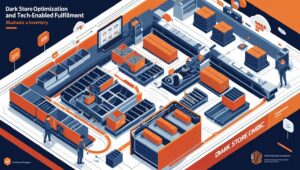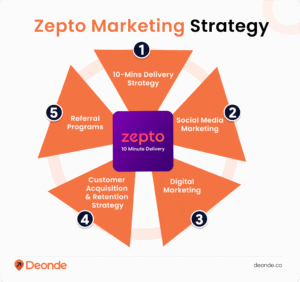
Quick Commerce in 2025: Speed, Strategy, and the Battle for Consumer Attention
“In a world where speed defines value, those who deliver faster, smarter, and with purpose will shape the future of commerce.”
2025 is not only bringing in new advanced technology but also tremendous advancements in customer interaction with their daily essentials.
Everyone is now living in a fast-paced world, where quick commerce, also called Q-commerce, is becoming not just another digital platform but a necessity of today’s world.
It all started with a quirky idea of delivering goods in 10 minutes and turned into an outrageous battle between numerous renowned platforms like Zepto, Blinkit, Swiggy Instamart, and BigBasket among others.
These companies are racing to be the best, whether it’s hopping on any trend or forming interesting collaborations.
As for consumers, as things are growing at an immense speed, customers’ expectations are also rising to skyrocketing levels, and to keep
themselves standing on those expectations, now it’s not only dependent on how fast the service is but it also depends on how well they build a strategy to keep up with the norms.
Connecting with customers with memorable advertisements is now one of the essential features used to attract potential customers.
The Rise of Q-Commerce in India:

Image credit- AI generated by Karishma Singh
Q-commerce is booming, driven by rising demand, urbanization, digital growth, and the need for instant satisfaction. In metro cities, it’s now a lifestyle.
Platforms like Zepto and Blinkit use dark stores and AI logistics for hyperlocal delivery. Swiggy Instamart, once just for groceries, now delivers everything from snacks to gadgets in 15 minutes.
Moreover, according to the latest report issued by RedSeer Consulting, India’s Q-commerce market is gonna upscale and is expected to go up to $5.5 billion, up from $2.8 billion in 2023.

Image credit- AI generated by Karishma Singh
Dark stores are nothing but warehouses, where goods are gathered in place for shipping purposes, often used by Q-commerce platforms to store their products.
The public are not allowed to visit these warehouses and goods are basically shipped to particular locations of the customers all over the place.
But nowadays, most platforms rely on data and AI to anticipate customer needs and take care of their necessities.
They gather information around the area, what things are mostly needed and ordered in particular locations, and stock accordingly, so that it isn’t unnecessary and wasteful.
Moreover, it also helps in lessening the delivery time and monitoring commodities getting out of stock easily.

Image credit- Deonde
With tremendous waves of customers on Q-commerce apps, it has become easier to place ads and promotions on the homepage.
These platforms are now showcasing their customers with tons of special offers, suggesting goods, and on top of that they are displaying ads within the app as well. These things are possible just by knowing users’ location, preference, shopping habits, and most importantly, time of day.
To understand it simply, we can go with a simple yet interesting live example of Zepto. Recently, Zepto started a campaign known as Zepto Media Network in 2025.
The specialty of this campaign is that it allows a diverse range of brands to advertise on its app directly. Indirectly, they help these emerging brands to connect with their potential customers in the best way possible.

Image credit- Indianretailer.com
Alongside advertising and promotion, many companies are now turning to partnerships. Whether it’s a new byline or a collaboration with well-known names, these alliances help brands boost their presence and connect with customers. When done right, they foster trust, loyalty, and long-term profitability.
For example, Blinkit partnered with Hindustan Unilever (HUL) to deliver skincare products at lightning speed, making routines quicker and more convenient.
Meanwhile, Instamart’s Smart Bazaar is focusing on healthy, affordable daily essentials, helping customers prepare nutritious meals on time.

Image credit- AI generated by Karishma Singh
These mentioned factors accumulated in one place lead to customer satisfaction and increase in sales of Q-commerce platforms in India.

Image credit- AI generated by Karishma Singh
After a detailed analysis on Quick Commerce, what’s clear is that it’s changing the way of living. Now it’s time to dive into the impact Quick Commerce can have in the future and its sustainable growth in India.
Source:
https://www.appnova.com/future-of-quick-commerce/
As mentioned, the Q-commerce industry is growing at a rapid pace in India; however, despite its success as a business model for today’s market, it also comes with its own shortcomings.
To stay ahead of struggles, these Q-commerce platforms need to divert their attention to capturing exclusive opportunities and advancing their technology to manage products and inventory diligently. That’s the only way for any to thrive in this competitive market.
— By Karishma Singh